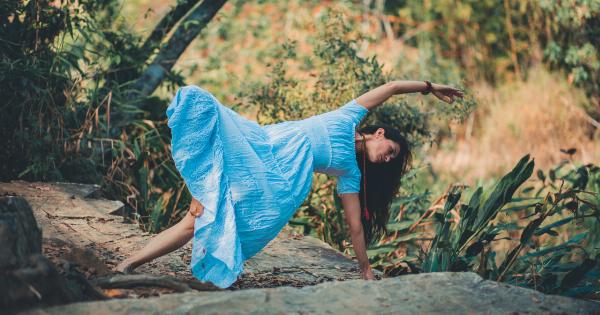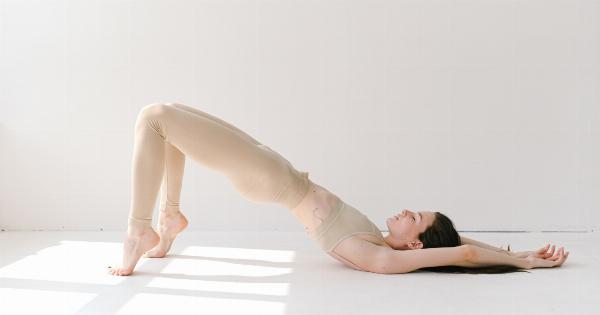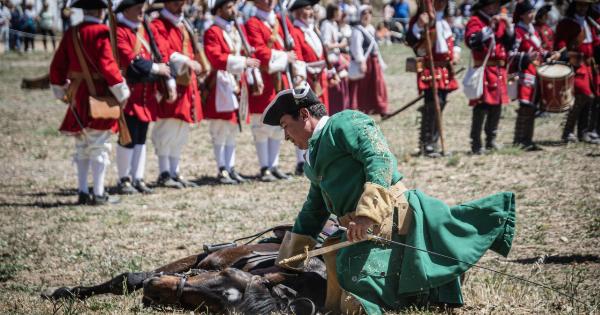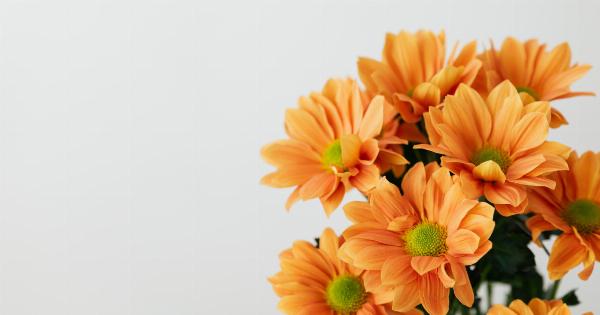Migraines are a debilitating type of headache that can last for hours or days and cause severe pain, nausea, and sensitivity to light and sound. According to the Migraine Research Foundation, more than 38 million Americans suffer from these headaches.
While there are many medications available to treat migraines, some people prefer natural remedies to avoid the potential side effects of drugs. Yoga is a gentle exercise that can help reduce stress and relieve migraine pain. In this article, we will explore some yoga poses that can relieve pain caused by migraines.
1. Child’s Pose (Balasana)
Child’s pose is a simple yoga pose that can help relieve tension in the neck and shoulders. To do this pose, start on your hands and knees, with your hands slightly in front of your shoulders.
Keep your toes together and sit back onto your heels, lowering your forehead to the floor. Extend your arms forward, keeping your palms facing down. You should feel a stretch in your spine and neck. Hold this pose for a few breaths, then release it.
2. Cat-Cow Pose
The cat-cow pose is a gentle stretch for your spine that can help relieve tension in the neck and back. To do this pose, start on your hands and knees, with your hands slightly in front of your shoulders.
Inhale and arch your back, lifting your head and tailbone towards the ceiling (cow pose). Exhale and round your spine, tucking your chin to your chest and bringing your tailbone towards your knees (cat pose). Repeat this sequence for several breaths, then release it.
3. Downward Facing Dog Pose (Adho Mukha Svanasana)
Downward facing dog pose is a classic yoga pose that can help stretch the entire body. To do this pose, start on your hands and knees, with your hands slightly in front of your shoulders.
Tuck your toes under and lift your hips up, straightening your arms and legs. Your body should form an upside-down V shape. Focus on lengthening your spine and releasing tension in your neck and shoulders. Hold this pose for several breaths, then release it.
4. Fish Pose (Matsyasana)
Fish pose is a gentle backbend that can help relieve tension in the neck and shoulders. To do this pose, start by lying flat on your back, with your knees bent and your feet flat on the floor. Place your hands under your hips, palms down.
Press your forearms and elbows into the floor, lifting your chest and head off the ground. Tilt your head back and hold the pose for several breaths, then release it.
5. Seated Forward Bend (Paschimottanasana)
Seated forward bend is a gentle stretch for the back and hamstrings that can also help relieve tension in the neck and shoulders. To do this pose, sit on the floor with your legs straight out in front of you.
Inhale and lift your arms up, then exhale and fold forward, reaching for your toes. You can use a strap or a pillow to support your head and neck. Hold the pose for several breaths, then release it.
6. Head-to-Knee Forward Bend (Janu Sirsasana)
Head-to-knee forward bend is a seated yoga pose that can help stretch the spine, hamstrings, and hips. To do this pose, sit on the floor with your legs extended in front of you. Bend your right knee and bring the sole of your foot to your left thigh.
Inhale and extend your arms up, then exhale and fold forward, reaching towards your left foot. Hold the pose for several breaths, then release it and repeat on the other side.
7. Legs Up the Wall Pose (Viparita Karani)
Legs up the wall pose is a gentle inversion that can help relieve tension and promote relaxation. To do this pose, lie on your back with your knees bent and your feet flat on the floor.
Scoot your hips closer to a wall and extend your legs up the wall, keeping your heels on the wall. You can place a pillow under your hips for support. Hold the pose for several breaths, then release it.
8. Reclining Bound Angle Pose (Supta Baddha Konasana)
Reclining bound angle pose is a relaxing yoga pose that can help stretch the hip flexors and relieve tension in the neck and shoulders. To do this pose, lie flat on your back, with your knees bent and your feet flat on the ground.
Bring the soles of your feet together and let your knees fall open to the sides. Place blankets or pillows under your knees for support. Hold the pose for several breaths, then release it.
9. Corpse Pose (Savasana)
Corpse pose is the final relaxation pose in most yoga classes. It is a pose of complete relaxation that can help relieve stress and tension throughout the body. To do this pose, lie flat on your back with your arms and legs extended.
Close your eyes and focus on your breath. Let your body sink into the ground and release all tension. Hold the pose for several minutes, then slowly come out of it.
10. Alternate Nostril Breathing (Nadi Sodhana)
Alternate nostril breathing is a yoga breathing technique that can help relieve stress and tension in the body. To do this technique, sit in a comfortable seated position and bring your right hand to your face.
Use your right thumb to close your right nostril and inhale through your left nostril. Then, close your left nostril with your right ring finger and exhale through your right nostril. Inhale through your right nostril, then close it with your right thumb and exhale through your left nostril.
Continue this pattern for several minutes, then release it.
Conclusion
Yoga can be a helpful natural remedy for migraine headaches. The breathing and relaxation techniques used in yoga can help reduce stress and tension in the body, which can trigger migraines.
The yoga poses listed above can help relieve pain and tension in the neck, shoulders, and spine, which can also alleviate migraine symptoms. If you suffer from migraines, consider adding some of these yoga poses to your routine to help ease your pain.


















